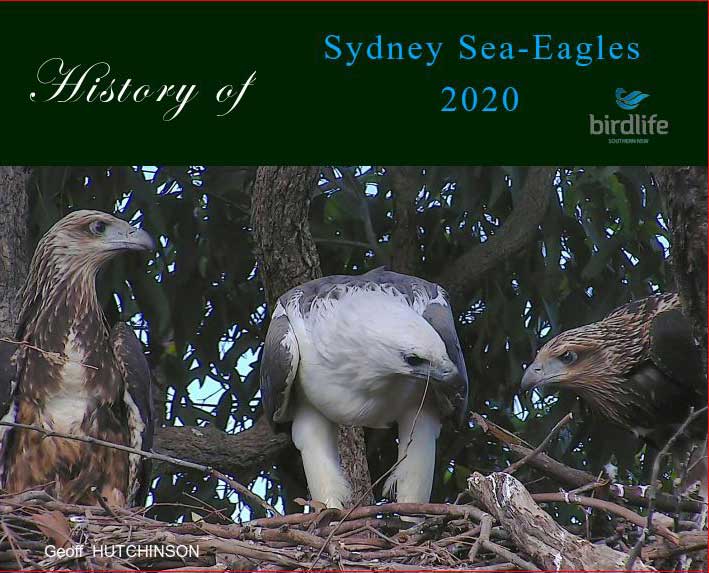Frequently Asked Questions
EagleCAM is a BirdLife Australia, Southern NSW, Research Project.
For more information about EagleCAM visit the BirdLife Australia EagleCAM website.
1: Where in Australia are these Sea-Eagles? In the Newington Nature Reserve at Sydney Olympic Park, NSW, Australia. You can downd load a Google Earth pin for BirdLife Australia Discovery Centre, This will open a selection box, save the file to your PC then with Google Earth open past it into ‘Places – My Places’.
2: Where is the Sea-Eagle nest? In a Broad-leafed Ironbark – a Eucalypt tree – (Eucalyptus fibrosa) in the Newington Nature Reserve.
3: How high up in the tree is the nest? In 2010 the nest was about 18 metres (60 feet) from the ground. This nest fell down in 2011 see EagleCAM History. In 2011 they built a new nest and it was about 16 metres (52 feet) above the ground. In 2012 they have built another nest and this one is about 20 metres (66 feet) above the ground.
4: Where is the camera installed? In 2010 the camera was mounted in an adjacent trunk of the same tree it was about 7 metres (30 feet) from the nest. In 2011 the camera was mounted about 2.5 meters (8 feet) from the nest in the same tree. In 2012 the camera is about 20 metres (66 feet) from the nest. These cameras are facing south and are about the same height as the nest so it is looking across the nest bowl and not into it as previous years.
5: Is the nest safe from disturbance? The nest is in a nature reserve with a perimeter fence, with restricted access. The site is protected by Sydney Olympic Park Authority (SOPA) Security and Rangers and under observation by BirdLife Australia volunteers. This study is part of a research Project and the observations are carefully managed.
6: Are the Sea-Eagles disturbed on the nest? As approved in the research protocol, no-one goes near the nest until the chick(s) is at least 4 weeks old and then access is still limited. A buffer zone is maintained around the nest and the forest.
7: Where can EagleCAM be viewed live? From the BirdLife Australia Discovery Centre, in the Newington Armory at Sydney Olympic Park and here on the Live Video Page.
8: What do the Sea-Eagles eat? Sea-Eagles are opportunistic feeders but their regular diet consists of fish caught from the river and nearby wetlands – mainly mullet, bream, whiting, eels, Silver gulls. Other prey has been seen as well – Flying Fox, other birds. For more information go to the Eagle Food. page.
9: Which Sea-Eagle catches the food? Both Sea-Eagles hunt for food but during the breeding season the male will supply the majority of the food for the female and chicks.
10: Which Sea-Eagle feeds the chicks? Both the female and the male will feed the chicks but the female will do most of the feeding.
11: How does the chick keep warm? Sydney Australia has a moderate climate but the chicks are hatched in the middle of winter and the temperature could fall as low as 5 degrees Celsius (41 deg F). The adults will brood the chicks to keep them warm.
12: Which parent broods at night? The female will do most of the incubating and brooding at night.
13: Which parent incubates the eggs? Mostly the female at night; they both take turns during the day.
14: How can we tell the eagles apart? Go to EagleCAM Identification. page.
15: Are the adults the same size? The female is larger then the male.
16: How old are the parents? It has been estimated that the male was at least 5-6 years old in 2008 – mature adults. The female that arrived in April 2016 (Lady), she was about 6 years old, her first year of breeding.
17: Are there other Sea-Eagles in the area? Other Sea-Eagles are observed from time to time, including juveniles. No other Sea-Eagle pairs have an established territory on the Parramatta River. The closest nests are about 16 km (10 miles) away. See Sydney Eagle Nests.
18: Mosquitoe spraying in the area? Go to Mosquitoe Control Program. on the Sydney Olympic Park web page all of the information is there.

